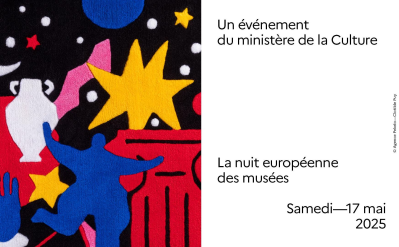News

The UNESCO crowns the French baguette bread
On November 30, the Committee of Intangible Cultural Heritage of the UNESCO unveiled that the French baguette bread has made a triumphant entry in the World Heritage. The definition of the UNESCO world heritage includes a set of cultural and natural sites presenting an exceptional interest for the common heritage of mankind. So this initiative is indeed the crowning of a very French symbol, and above all of diverse craft know-how in relation with its fabrication.
The French National Confederation of Bakery registers about 35,000 establishments, i.e. a rate of one bakery for 1,800 inhabitants. Bakery-pastry craft is ranked first in the list of food retail businesses. Over 12 million consumers pass the threshold of a bakery every day, and over 6 billion baguette breads are produced every year!
A traditional craft and know-how
Baguette is, according to the UNESCO Committee “the most popular kind of bread enjoyed and consumed in France throughout the year”. Beyond this simple statement that shows an enthusiasm that any French person or person who has tasted the baguette would understand and agree with, the UNESCO notes in its decision that “the traditional production process entails [several steps]”: weighing and mixing the ingredients, kneading, fermentation, dividing, relaxing, manually shaping, second fermentation, marking the dough with shallow cuts, “the baker’s signature”, and of course baking.
The baguette, unlike other loaves, is “made with only four ingredients (flour, water, salt and leaven and/or yeast)”, simple ingredients that nevertheless allow each baker to obtain “a unique product”. The baguette therefore requires “specific knowledge and techniques: they are baked throughout the day in small batches and the outcomes vary according to the temperature and humidity”.
A daily purchase
It is all the specificity required to make this typical long loaf that generates “generate modes of consumption and social practices that differentiate them from other types of bread”.
Indeed, UNESCO notes that the baguette leads to “a daily purchase” which is at the origin of “daily visits to bakeries” by the French (and by all visitors to France!). But why such a consumption habit? Because the baguette, with its “crisp crust and chewy texture” offers “specific sensory experience”! The baguette is thus consumed, UNESCO stresses, in various contexts, “including during family meals, in restaurants, and in work and school cafeterias”. As for the production process, it is learned in the context of work-study courses (specialised school/bakery), an apprenticeship that enables “future bakers to acquire the necessary knowledge of the ingredients, tools and process”.
Safeguarding skills and knowledge
The UNESCO Intangible Cultural Heritage Convention aims to promote “the safeguarding of knowledge and skills necessary for traditional crafts”, but also “cultural practices transmitted from generation to generation, such as oral traditions, performing arts, social practices, rituals and festive events, and knowledge and practices concerning nature and the universe”.
Composed of 24 representatives elected from among the 180 States that sit on UNESCO, the Convention for the Safeguarding of the Intangible Cultural Heritage is chaired this year by Morocco, which is hosting it in Rabat until 3 December.
The Committee is to examine a total of 56 requests for inscription, including 46 requests for inscription on the Representative List of the Intangible Cultural Heritage of Humanity, which to date has 530 elements inscribed.








No comment
Log in to post comment. Log in.